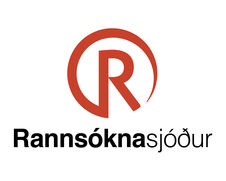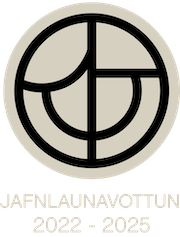Hinn svipuli alheimur: Hitun rafeinda og endurvinnsla jóna í háaflspúlsaðri segulspætu - verkefni lokið
Fréttatilkynning verkefnisstjóra
Verkefnið fjallaði um segulspætur og sér í lagi háaflspúlsaðar segulspætur. Meðal annars skoðuðum við áhrif hremmandi segulsviðsins á jónunarhlutfall, ræktunarhraða og aflflutning til rafeinda í háaflspúlsuðum segulspætum. Þetta var skoðað bæði með tilraunum og líkanagerð.
Afhleðslur með mismunandi skotmörk voru könnuð, m.a. kopar, grafít, þungsteinn og títan. Í afhleðslu með grafítskotmark var endurvinnsla vinnugassins ráðandi, en í afhleðslu með koparskotmark var sjálfspætunarendurvinnsla ráðandi, og í afhleðslu með títan skotmark er endurvinnsla bæði vinnugassins og sjálfspætunnar mikilvæg. Við fundum að hlutfall jónunarkolefnis í flæði agna, þegar grafít skotmark er notað, er mjög lágt, og líkur á að kolefnisjónir snúi aftur til skotmarks mjög háar. Jónunarlíkur voru fundnar vera háðar nær eingöngu, hámarki í straum um afhleðsluna, á meðan líkur á að jón snúi aftur til skotmarks er háð skotmarkinu og fjölmörgum öðrum þáttum, sem og með hámarki straums um afhleðsluna. Þegar háaflspúlsuð afhleðsla er notuð til ræktunar þunnra húða eru markmiðin tvö: hátt hlutfall jónunar í flæði spættra agna til undirlags og hár ræktunarhraði. Við sýndum fram á að fyrra markmiðið kemur alltaf á kostnað þess síðara, og við köllum þetta HiPIMS málamiðlunina. Við leggjum til að þessa málamiðlun sé auðveldast að fá fram með því að hafa áhrif á mesta útslag straums um afhleðsluna, sem opnar fyrir bestun á fjórum öðrum ytri stýristærðum: púlslengd, þrýstingi vinnugass, segulsviðsstyrk og ójafnvægi í segulsviði, til að fá fram bestu samsetningu jónunar í flæði spættra agna og ræktunarhraða. Niðurstöður verkefnisins hafa verið birtar í 27 vísindagreinum og fleiri eru í vinnslu, einni doktorsritgerð, og einni bók.
English:
In the project the various aspects of the magnetron sputtering discharge, and in particular the high
power impulse magnetron sputtering (HiPIMS) discharge, were explored. This included studying the effects of the confining magnetic field on the ionized flux fraction and deposition rate, and the
electron power absorption mechanisms in a HiPIMS discharge. This was studied by both experiments and modeling. Discharges with varying sputter targets were investigated including copper, graphite, tungsten and titanium. In a discharge with graphite target, working gas recylcling dominates, while in a discharge with copper target, self-sputter recycling dominates, and in a discharge with titanium target, both self-sputter recycling and working gas recycling play a role. Our results indicate that the ionized flux fraction in a discharge with graphite target is very low and the back-attraction probability is very high. The ionization probability was found to be determined by the peak discharge current, while the back-attraction probability was found to depend on the target material and various other factors including the peak discharge current. In high power impulse magnetron sputtering (HiPIMS) operation, there are basically two goals: a high ionized flux fraction of the sputtered target material and a high deposition rate. We demonstrated that the former always comes at the cost of the latter, which we refer to as the HiPIMS compromise. It is here proposed that this compromise is most easily made by varying the discharge current amplitude, which opens up for optimization of additionally four external process parameters: the pulse length, the working gas pressure, the magnetic field strength, and the degree of magnetic unbalance to achieve the optimum combination of the ionized flux fraction and the deposition rate. The results of the project have been published in 27 articles so far, one Ph.D. thesis and one book.
∙ A short easily understandable description of the project, its results and impact
The project aimed at better understanding of the high power impulse magnetron sputtering (HiPIMS) discharge. Magnetron sputtering is applied for deposition of thin films and is indispensable to many industrial processes. The discharge properties were determined while varying the confining magnetic field, and the target material. We found the magntic field to have a significant influence on the ionized flux fraction and the deposition rate. In a discharge with graphite target working gas recylcling dominates while in a discharge with copper target self-sputter recycling dominates. We proposed approaches to optimize the operation of a HiPIMS discharge.
∙ Information on how the results will be applied
The findings of this project have all been published or will be published. They improve our
understanding of the magnetron sputtering discharge and in particular the high power impulse
magnetron sputterin (HiPIMS) discharge. Magnetron sputtering is used in various industries around the world and is the most imprtant thin film deposition technique. The results of this project therefore have both scientific impact as well as having impact on the develpment and practical use of this technology.
Heiti verkefnis:
Hinn svipuli alheimur: Hitun rafeinda og endurvinnsla jóna í háaflspúlsaðri
segulspætu / Electron heating and ion recycling in high power magnetron
sputtering discharges Verkefnisstjóri: Jón Tómas Guðmundsson, Háskóla Íslands
Tegund styrks: Verkefnisstyrkur
Styrktímabil: 2019-2021
Fjárhæð styrks kr. 37.513.000
Tilvísunarnúmer Rannís: 196141


